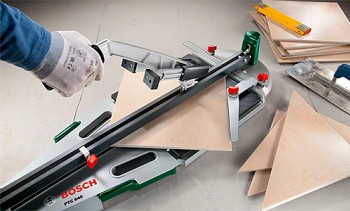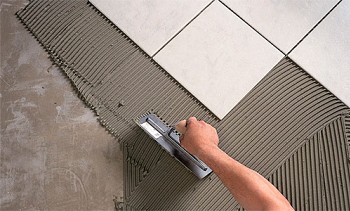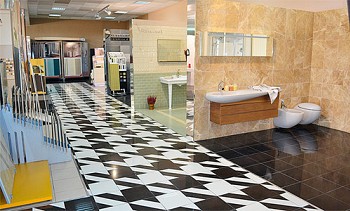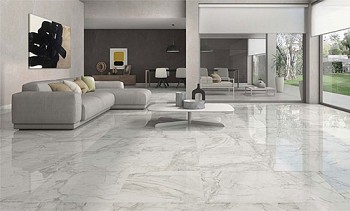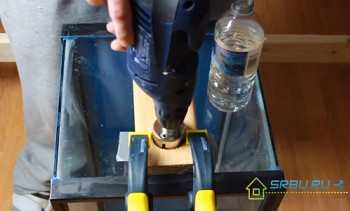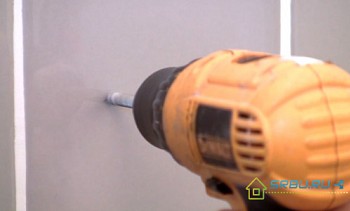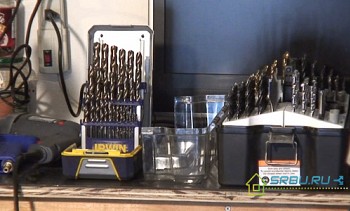Among modern facing materials, granite stands out with its special strength and wear resistance. These qualities cause some problems during the installation process. In particular, drilling holes in porcelain stoneware can cause serious difficulties. How to drill porcelain tiles and how to properly carry out the drilling process - we will pay attention to these two problems in this article. Because the fragility and hardness of porcelain stoneware involves the selection of a special tool to solve this difficult task.
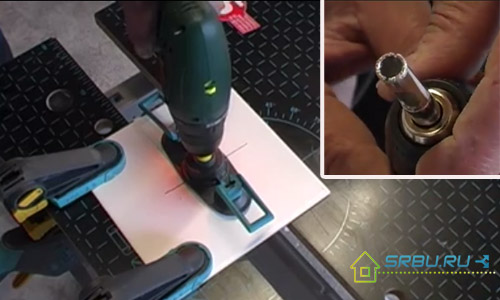
Porcelain drilling tool
Today, drilling holes in ceramic and porcelain tiles is possible with three types of tools: diamond crowns and two types of diamond drills. Let us briefly characterize each type of tool and determine how convenient diamond crowns are for this purpose and with which drill porcelain tiles should be drilled.
For drilling holes in porcelain stoneware, diamond crowns with galvanic spraying are often used. Low cost is their main advantage.
They reduce the end pressure during drilling, and also make it possible to significantly increase the speed of the process. The main disadvantage of crowns is a small working resource. Porcelain tile with a thickness of 8 mm with one such crown can be drilled no more than five times.

This may look like a plated crown.
Sintered ring diamond drills can be successfully used for drilling porcelain stoneware, although they are more often used for drilling concrete and similar durable materials. The thickness of the working part of such a drill is from 2 mm. Such drills are used infrequently due to high end pressure. Their disadvantage is also the low drilling speed: it takes 3-5 minutes per hole. Despite the shortcomings, ring diamond drills have a serious advantage: their working resource significantly exceeds the resource of crowns and amounts to more than 100 holes for one drill.

Diamond core drill bits.
In general, I think now it has become clear how to drill porcelain tiles, now let's talk about how to carry out the drilling process itself. If you are interested in what types of drills are, for working with various materials, see the article:Types of drills - we select a tool for drilling metal, wood, concrete and tile.
How to drill porcelain tiles: practical tips
Porcelain should be drilled only on the front side. To save the resource of the drill, holes are sometimes drilled at about 2/3 of the thickness of the tile, after which part of the thickness, which is not drilled, is knocked out by a sharp blow. Moreover, chipping of the edge of the hole often occurs on the back side. In order for them to be hidden, drill the tile only from the front side.
For drilling porcelain tiles it is better to use a special drilling machine or drill stand. This not only lengthens the life of the drill, but also simplifies the work, and the drilled hole makes it even and tidy. A two-speed drill must be used, since when drilling with porcelain stoneware with a diamond drill, a high rotation speed is not required. An impact drill should not be used, as the impacts of the drill can simply crack the granite tiles.
Before drilling porcelain tiles, do not forget to put fiberboard or plywood under it, so as not to accidentally damage the surface with a drill. The drill should be directed strictly vertically. Do not allow the drill to tilt strongly with respect to the tile during work.
This common mistake often leads to the destruction of tiles or failure of the drill.
Diamond drills heat up during operation and should be cooled to prevent microcracks and damage. This problem is solved by supplying coolant (water) during drilling directly to the drill. In addition, to prevent heating, you should work at medium speeds.
When cutting porcelain tiles in an industrial environment, continuous coolant systems are used. At home, you can cool the drill with plain water from a plastic bottle. In the bottle cap, you can make several small holes through which water will be supplied to the drill. You can do even easier: cool the drill with a thoroughly moistened sponge in advance.

Drill cooling with a damp sponge.
If the drilling is done correctly, a neatly drilled part of it will repeat from the tile, repeating the diameter of the drill. Not a problem if small chips appeared on the tile back: they will be filled with glue, and this will not affect the quality of the tile laying.
Be sure to watch the video below, from it you will learn what tools and devices for drilling porcelain tiles are available on the market and how they can be used.


